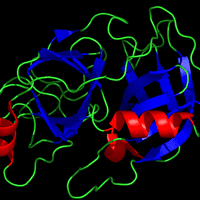
Aug 19, 2010
Transcript
LEONARD HAYFLICK: If I take a tiny biopsy from any part of your anatomy that you're willing to surrender to me ...
JAD ABUMRAD: Like say, a fleck of my—like, my wrist. A fleck of my wrist.
LEONARD HAYFLICK: Your wrist, your—anywhere you want. The tip of your nose, the tip of your toe, I don't care where it is. So long as you give me permission. You can actually do it yourself. You don't need my permission. I've done it to myself hundreds of times.
JAD: Seriously?
LEONARD HAYFLICK: Of course. You take a—one easy way to do it is to pinch your skin in an area that has hair, and then you pinch your skin in order to numb it a little bit. And then you raise a pyramid of skin by grabbing onto the tip of a hair, pull it up, and you get a little pyramid of skin, right?
JAD: Mm-hmm.
LEONARD HAYFLICK: And then with your other hand, you take a sterile scalpel or a razor blade which you can easily sterilize, and whack the tip of that pyramid of skin off. There'll be some momentary pain and a couple drops of blood. I don't think you'll collapse or go into shock.
JAD: No, if it's for science, why not?
LEONARD HAYFLICK: For science, why not?
JAD: So you've got a hair with a little bit of skin.
LEONARD HAYFLICK: And now I've got a hair with a tiny scrap of skin on the end of it. And I drop it into a test tube, and I introduce an enzyme preparation called trypsin. And that material dissolves the cement that holds all the cells together in your tissue. Think of your tissue as a brick wall, and once I drop that brick wall into my test tube I need to dissolve the mortar.
JAD: Right.
LEONARD HAYFLICK: And I dissolve the mortar with trypsin. And now I have your individual cells. And they will now sit down on the floor of the flask, and if I feed them and treat them nicely, feed them properly and put them into an incubator that has the same temperature as your body, because that's what they like, then your cells will begin—will metabolize the nutrients that I've given to them and they will divide. Each cell will produce two cells. So if I put a million cells into a vessel on day one, then on day three, I will have two million cells.
-30-
Copyright © 2023 New York Public Radio. All rights reserved. Visit our website terms of use at www.wnyc.org for further information.
New York Public Radio transcripts are created on a rush deadline, often by contractors. This text may not be in its final form and may be updated or revised in the future. Accuracy and availability may vary. The authoritative record of programming is the audio record.